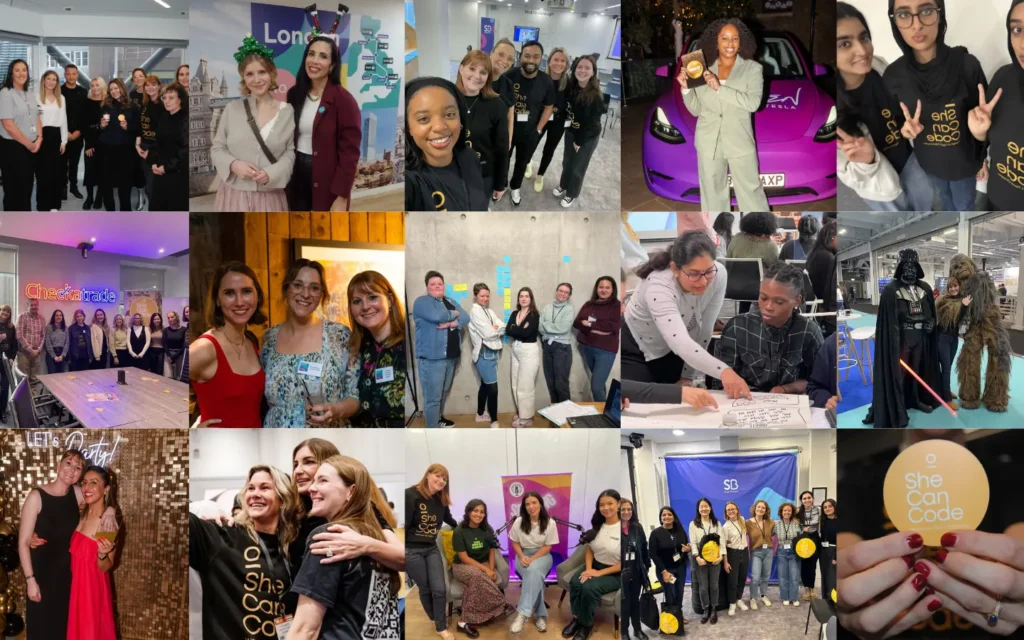The reasons are complex and varied, but Deloitte has estimated that, by the end of 2022, just 32% of all tech sector employees in technical roles will be women, with an additional 7% working in non-technical roles within large technology companies. In this report, Deloitte focuses on larger technology companies but notes that the challenge is even greater in small and medium-sized tech companies due to fewer resources and less stature in the industry.
There has been a sea change in the last few years, with more tech companies focused on implementing gender diversity within their teams. This is in part due to a tight labour market but can also be attributed to the clear value women bring to teams. In addition to doubling the talent pool, a Center for Creative Leadership study suggests that having more women in the workplace may actually make an organisation a better place to work.

So, how can you identify a tech company focused on equity in hiring? In this piece, Alaska May, Chief People Officer at Open Systems, gives us several ways to find out.
Alaska leads Open Systems’ People organization as Chief People Officer. Her top responsibilities include establishing a world-class talent management program to hire, grow, and retain employees; maintaining our unique and vibrant company culture; driving gender diversity and allyship in tech; strengthening the company’s diversity, equity, and inclusion (DEI) ethos; and fostering a positive and supportive workplace environment where employees can do their best work.
Alaska leads Open Systems’ People organization as Chief People Officer. Her top responsibilities include establishing a world-class talent management program to hire, grow, and retain employees; maintaining our unique and vibrant company culture; driving gender diversity and allyship in tech; strengthening the company’s diversity, equity, and inclusion (DEI) ethos; and fostering a positive and supportive workplace environment where employees can do their best work.
CONSIDER WHO SITS AT THE TOP
When you research a company and look at its top management, who do you see? If you see a mix of men, women, and people of colour, then you have a sense of what and who they value as an organisation.
Many companies also feature their Board of Directors on the company website. A company that truly recognises the value of women in the workplace will have women board members, because they understand that women add fresh perspectives and proven positive results on corporate boards. Companies with women board members also tend to have more women in leadership positions.
Finally, you should also take note of who is quoted or featured in company press releases, blogs, and visual content. Are women a part of that mix? If so, you know that the company is thinking critically about how their values are reflected in their brand.
LOOK FOR WORKPLACE FLEXIBILITY
In most cultures, women are largely responsible for caregiving, whether for children or older family members. A company that is committed to workplace flexibility, with remote or hybrid work, understands this and will work with you as you manage your responsibilities.
In 2020, my own team committed to a remote/hybrid working environment to provide employees with greater flexibility, and we have had significant success in building the diversity of our team as a result. Thirty-four percent of our recent female hires are remote workers. It is vital that companies find exciting ways to offer a truly flexible place of work, which means going beyond hybrid. This requires understanding what ‘good’ looks like for potential employees, and how the company can fit into their existing commitments to get the best out of their time.
Another important benefit to look for at a tech company is work/life balance. For women, who generally take on more responsibility for managing the home life, being able to pick up groceries or run errands after work can be essential. While longer days can be the norm at startups and smaller companies, many larger tech firms are now touting work/life balance. This is in part to draw in new graduates from Gen Z, who’ve made clear that their personal well-being must be a top priority for the employer they choose, but the benefits of work/life balance apply to all employees.
Some simple ways you can determine a company’s success in promoting a healthy work/life balance include reaching out to people in your LinkedIn network to do a reverse reference check. You can also use in-office interviews to discreetly observe employees for any tell-tale signs of a bad environment, such as people walking with their heads down or a lack of casual conversations. Also, be sure take a close look at the reviews and comments on Glassdoor to glean additional insights.
READ JOB DESCRIPTIONS THOUGHTFULLY
Words, and how they are used, matter. The language utilized in a job description can tell you a great deal about a company. For example, a job description can tell you whether the company is conscious of bias. If the words used are not gender neutral, it’s possible that the organization is not considering that aspect of hiring, and therefore may not be a good fit.
In research studies, researchers have consistently found evidence that gendered wording exists in recruiting practices and sustains inequity. They found that companies in male-dominated industries typically used masculine language to emphasize the company’s “dominance” of the marketplace, whereas a company in a less male-dominated field might take a more neutral approach and emphasize the company’s “excellence” in the market, for example. Likewise, a company within male-dominated occupations may be searching for someone to “analyse markets to determine appropriate selling prices,” whereas an advertisement in a less male-dominated occupation might emphasize “understanding markets to establish appropriate selling prices” in its search.
Look for a diversity statement on the job description or website, as well. This could indicate that the company is committed to equity in hiring and you could be a good fit for the role.
Finally, one additional thing to consider when reading the job description is your skill set and how it aligns. And here, I want to be perfectly clear: apply for jobs that interest you, even if you don’t have 100% of the qualifications listed! Women frequently won’t apply for jobs if their skills don’t align 100% — but men apply for jobs when they have as little as a 60% match. Do not self-select yourself out of an opportunity you’re interested in solely because you don’t have every skill listed in the job description. Good companies have training and development programs that will help you build those skills.
WE’RE LOOKING FOR YOU
Many tech companies are committed to building a diverse and inclusive workforce. Your skills and expertise are in demand, and you are in the driver’s seat when it comes to job opportunities. Keep these tips in mind and you’ll find the position you’re seeking with a company that embraces you and your talents.
Discover SheCanCode’s Company Profile directory – an index of all the companies we work with who are committed to workplace diversity. We work closely with companies of all sizes, across many industry sectors to help them attract and hire a diverse workforce.








